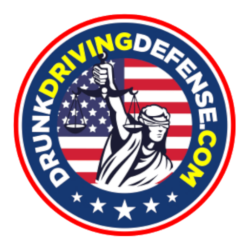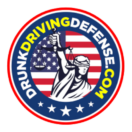How to Avoid Being Pulled Over for DUI
Today, officers assigned to a “DUI Task Force” team or similar special traffic enforcement unit will basically pull over any vehicle they see or come in contact with that gives them ANY explainable reason for confronting the driver. These special units typically operate at late hours (typically, 10 PM until 6 AM or 11 PM until 7 AM) and on high DUI-DWI days (Wednesday through Sunday, typically) when they know to expect a sizable percentage of drivers (1 or 2 out of every 10) to be drinking or using some substance that may impair them. Read on about how to avoid being pulled over for DUI.
Except when DUI-DWI enforcement occurs through established roadside sobriety checkpoints (roadblocks) or at an accident scene, the first interaction with a police officer usually occurs when errant driving conduct or some defective item of equipment or an expired tag draws the officer’s attention to your vehicle. This indicates to him or her that the vehicle can be stopped and legally investigated. Sometimes the “thing” that leads to your pullover may be unrelated to your driving actions, such as when an obvious equipment defect exists or an expired registration or inspection sticker is visible on your car.
However, the NHTSA (the National Highway Traffic Safety Administration, an arm of the federal Department of Transportation) has identified a number of visual driving cues (or clues, as they are sometimes referred to by officers) that NHTSA suggests police officers use to identify possible alcohol-impaired driving. Because this material is widely distributed to police agencies and included in the recommended NHTSA training program, it has become the initial basis upon which most officers begin to document their probable cause for stopping a vehicle in drunk driving enforcement.
This material was first published through NHTSA in 1981 as Visual Detection of Driving While Intoxicated – An Explanation of the DWI Detection Guide (DOT-HS-805711). The list is based upon 20 driving cues (clues) that NHTSA determined, from some detailed research, were the best ones for identifying likely night-time drunk drivers (.10 BAC or more) and setting them apart from night-time sober drivers. The clues were based on field studies where 4,600 patrol stops were correlated with BAC measurements. NHTSA published information suggesting that the 20 cues (clues) could be associated with 90% of all impaired driving detections.
This list was taught to every NHTSA “Standardized Field Sobriety Test” student for over twenty years. The list has been revised and placed in “groupings” recently to reflect newer “studies.” See information on the new study at.
The original 1981 NHTSA detection guide also assigned a probability to each of the cues purporting to indicate the relative probability (from a high of 65% to a low of 30%) that a driver exhibiting the cue was driving with a BAC of .10% or more. Seeing two or more of these cues in combination with each other increased the likelihood of the driver having a blood alcohol level of 0.10% or more. NHTSA warned users, however, that the probability values were intended primarily to emphasize the relative importance of a particular cue or clue and did not endorse using them when testifying in court.
Top 20 Bad Driving Habits Police Are On the Lookout For
The higher the percentage, the more likely police will believe you are driving drunk:
1. Turning with a wide radius 65%
2. Straddling the Center or Lane Marker Line 65%
3. Appearing to be drunk 60%
4. Almost striking and object or vehicle 60%
5. Weaving 60%
6. Driving on other than designated roadway 55%
7. Swerving 55%
8. Slow speed (driving 10 mph or more under the speed limit) 50%
9. Stopping, without cause, in the traffic lane 50%
10. Following too closely 50%
11. Drifting 50%
12. Tires on center or lane marker 45%
13. Braking erratically 45%
14. Driving into opposing or crossing traffic 45%
15. Signaling inconsistent with driving actions 40%
16. Slow response to traffic signals 40%
17. Stopping inappropriately (other than in traffic lane) 35%
18. Turning abruptly or illegally 35%
19. Accelerating or decelerating rapidly 30%
20. Headlights off 30%
The Impaired Signs for Motorcycle Riders Are Different
The foregoing list applies to cars, trucks, and other traditional vehicles. The list for motorcycle drivers is different. For an up-to-date consideration of the “cues” the officers are looking for to detect an impaired motorcyclist, check out a recent pamphlet outlining similar acts by motorcyclists published by the National Highway Transportation and Safety Administration.
The two things that should immediately come to every reader’s mind are (1) everyone has done some of these things, possibly on a daily basis, especially in the era of the hand-held cell phone, and (2) that the most common traffic offense, speeding, is not on the list. Going back to what was stated before, ANY driving behavior, vehicle deficiency or activity that looks the slightest bit suspicious will usually result in an officer coming in contact with you, just to see if you display any signs of drinking or using drugs.

